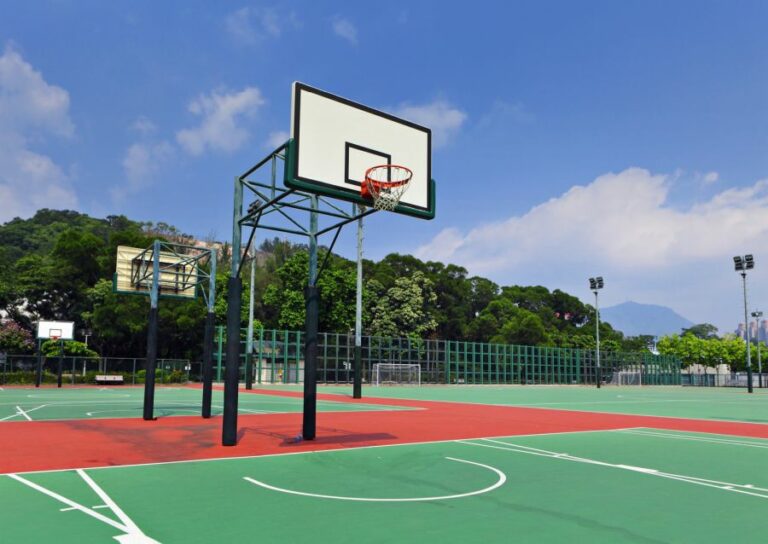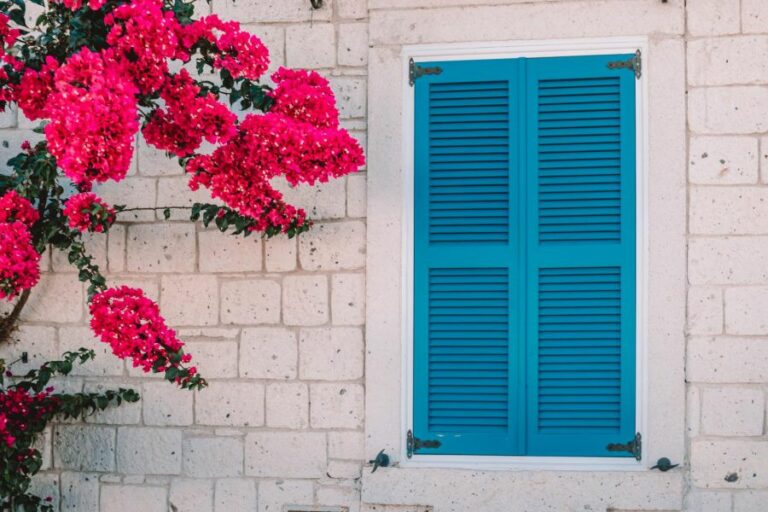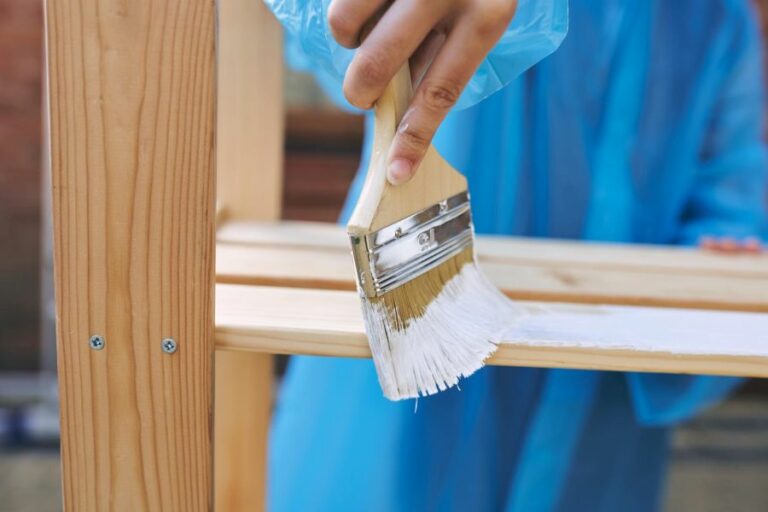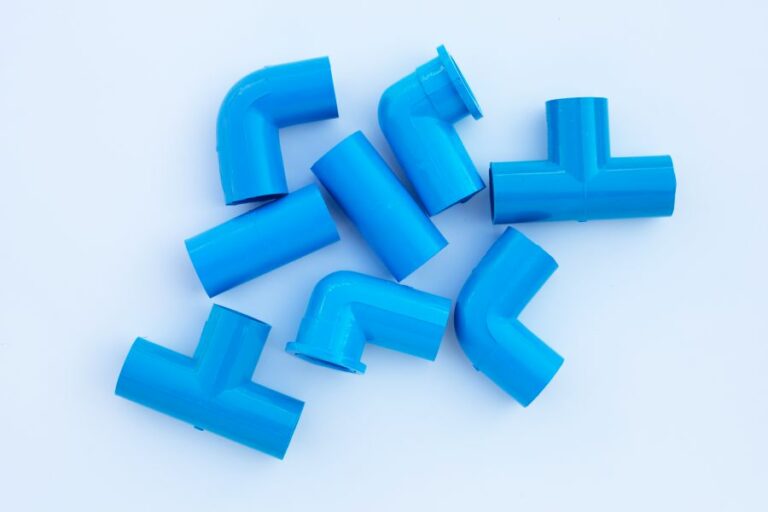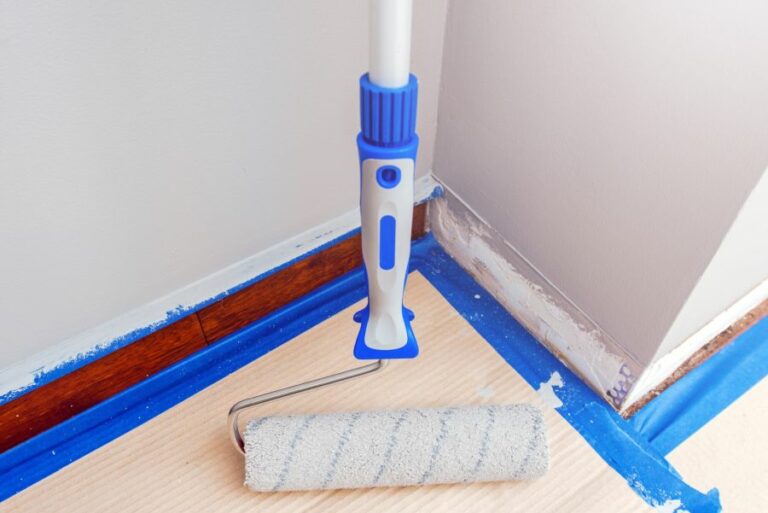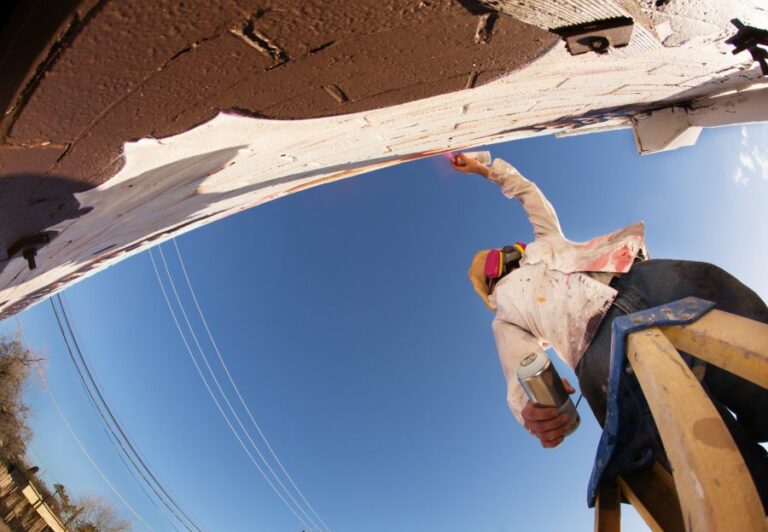Transform Your Home’s Exterior with New Outdoor Paint
Discover the transformative power of outdoor house paint in our latest blog post, which delves into the vibrant world of exterior painting. Unlock the secrets to selecting the perfect colors and finishes that elevate your home’s curb appeal and protect your sanctuary from the elements.
Learn to breathe new life into your abode while avoiding common pitfalls and mistakes. Get ready to unleash your creativity and explore our expert tips and tricks that will leave your neighbors green with envy. Save your seat; this is one makeover journey you don’t want to miss!
Outdoor house paint:
Selecting the right outdoor house paint requires considering factors like climate, house material, previous paint, and desired finish. There are two main types, water-based (latex) and oil-based (alkyd) paints, each with pros and cons. A successful painting project involves proper surface preparation, using high-quality paint and tools, and following the manufacturer’s instructions. Timing and weather conditions are also crucial for visually appealing and long-lasting results.

Discover the perfect outdoor house paint to elevate your home’s curb appeal. Learn about various paint types, application techniques, and essential factors for a long-lasting, weather-resistant finish as you delve into our comprehensive guide below.
Contents
- 1 Exterior Residential Paint
- 2 Determining the Best Type of Paint for Your Home’s Exterior
- 3 What is the most durable and long-lasting exterior paint for houses?
- 4 Is Specialized Exterior Paint Necessary for the Outside of Your Home?
- 5 What is the Finest Exterior Paint to Withstand Extreme Weather Conditions?
- 5.1 • Key Factors to Consider in Choosing Exterior Paint for Extreme Weather
- 5.2 • Recommended Exterior Paints for Extreme Weather
- 5.2.1 – 1. Sherwin-Williams Duration – Excellent Durability and Flexibility
- 5.2.2 – 2. Benjamin Moore Aura – Superior Coverage and Breathability
- 5.2.3 – 3. Behr Marquee – Water-Resistance and Advanced Dirt-Repellent Properties
- 5.2.4 – 4. PPG Pittsburgh Paints Manor Hall – All-Weather Protection and Gloss Retention
- 5.3 • Tips to Enhance the Performance of Exterior Paint in Extreme Weather
Exterior Residential Paint
Painting the exterior of a house is a significant investment in both time and money. It is important to make informed decisions to ensure the result is aesthetically pleasing and long-lasting. We will discuss the different types of outdoor house paint, factors to consider when selecting paint, and tips for a successful painting project.
• Types of Outdoor House Paint
There are two main types of outdoor house paint: water-based (also called latex) and oil-based (also called alkyd) paints. Each type has its advantages and disadvantages.
– Water-Based (Latex) Paint
Water-based paint has become increasingly popular due to its numerous benefits. Some of the advantages of using latex paint for outdoor house painting projects include the following:
- Easy application and clean-up
- Quick drying time
- Low odor
- Resistant to chipping and peeling
- Long-lasting and durable
- Highly resistant to changes in temperature and humidity
However, there are a few potential downsides to using water-based paint:
- May not adhere well to surfaces previously painted with oil-based paint
- Certain types might not provide the same level of gloss as oil-based paints
– Oil-Based (Alkyd) Paint
Although less commonly used today, oil-based paints still have some advantages over latex:
- It provides a smoother, more durable finish
- Better adhesion to various surfaces, especially those previously painted with oil-based paint
- Greater resistance to stains
- Can produce a higher level of gloss
Disadvantages of oil-based paint include:
- More difficult to apply and clean up (requires the use of paint thinners)
- Longer drying time
- Strong odor
- Can yellow over time
- Less resistant to changes in temperature and humidity
• Important Factors to Consider When Selecting Outdoor House Paint
There are several factors to consider when choosing the right paint for your house’s exterior.
– Climate
The climate where you live should heavily influence your choice of paint. Choosing paint with excellent water resistance and durability is essential in areas with harsh weather conditions, such as extreme temperatures, heavy precipitation, and high humidity. In general, water-based paints perform better under these conditions.
On the other hand, if you live in a relatively dry area, oil-based paint is a better choice, as they are more resistant to UV damage from the sun.
– House Material
Different paints adhere better to various materials. For instance, water-based paints are often better suited for surfaces such as masonry, stucco, and vinyl siding, whereas oil-based paints may adhere better to wood and metal surfaces.
It’s essential to check the paint label for specific recommendations regarding suitable surfaces before deciding.
– Previous Paint
If you’re repainting the exterior of your house, the type of paint used previously is an important factor to consider. Generally, it’s best to use the same type of paint over the existing layer (i.e., water-based over water-based, oil-based over oil-based).
However, suppose you’re unsure of the previous paint type or want to switch types, applying a high-quality primer before painting is crucial. This will improve adhesion and prevent potential paint compatibility issues in that case.
– Paint Finish
Exterior house paint comes in various finishes, including flat/matte, satin, semi-gloss, and high-gloss. Each finish has advantages and disadvantages, so consider your preference and how the finish may impact the appearance and durability of the paint job.
Flat/matte finishes can help hide surface imperfections but may be less durable than glossier finishes. Satin and semi-gloss finishes balance durability and visual appeal, while high-gloss finishes provide maximum durability and moisture resistance but can highlight surface imperfections.
• Essential Tips for a Successful Outdoor House Painting Project
– Proper Surface Preparation
One of the keys to a long-lasting, visually appealing paint job is thorough surface preparation. This includes cleaning the surface, scraping off any loose or peeling paint, sanding rough areas, patching holes or cracks, and applying a high-quality primer.
– Timing and Weather Conditions
It’s crucial to paint under favorable weather conditions. Rain, extreme temperatures, and high humidity can all affect the paint’s ability to dry and adhere to the surface. Check the forecast before starting the project and plan accordingly.
– Use High-Quality Paint and Tools
Investing in high-quality paint and tools will ultimately save you time and money in the long run. While it may be tempting to opt for cheaper options, these can result in a less durable, less visually appealing finish and require more frequent repainting.
– Apply Multiple Coats
Applying multiple coats of paint helps ensure even coverage and increases the paint job’s durability. Allowing at least two coats is a good rule of thumb, but consider applying additional coats for high-traffic areas or surfaces exposed to harsh weather conditions.
– Follow the Manufacturer’s Instructions
Always read and follow the manufacturer’s instructions on the paint can, which will help ensure a successful outcome. Pay close attention to recommendations regarding surface preparation, application, drying time, and the appropriate temperature range for painting.
In conclusion, selecting the right outdoor house paint involves carefully considering factors such as climate, house material, previous paint, and your desired finish. Proper surface preparation, using high-quality paint and tools, and following the manufacturer’s instructions also play a crucial role in achieving a successful, long-lasting paint job.
Determining the Best Type of Paint for Your Home’s Exterior
Selecting the right paint for your home’s exterior can be daunting. With so many options available on the market, knowing which paint will provide the best protection, longevity, and overall appearance for your house is essential.
This comprehensive guide will help you navigate the world of exterior paint options, offering expert advice and recommendations to help you make the best choice for your home.
• An Overview of Exterior Paint Types
Before diving into specific brands and products, it’s essential to understand the key types of exterior paint available. These types vary in terms of their raw materials, formulations, and performance characteristics.
– Acrylic Latex
Acrylic latex paints are water-based paints containing acrylic resin as the primary binding agent. These paints offer excellent adhesion, flexibility, and resistance to weather and other outdoor elements. They are among the most popular options for exterior house paint, primarily due to their durability and ease of application.
Pros:
- Long-lasting and durable
- Good adhesion to various surfaces
- Resistant to mildew and fading
- Easy to clean with soap and water
- Low odor and low VOCs (volatile organic compounds)
Cons:
- It can be more expensive than other types of paint
- May not adhere well to oil-based or glossy surfaces without proper surface preparation
– Oil-Based Paint
Oil-based paints, also known as alkyd paints, use a synthetic resin in an oil solvent as the binding agent. These paints have been used for many years but have declined in popularity due to environmental concerns and the rise in popularity of acrylic latex paint.
Pros:
- Excellent adhesion and durability
- Ideal for use on metal surfaces
- It can provide a smooth, hard finish
Cons:
- Longer drying time compared to acrylic latex paint
- High VOC content and a strong odor
- Requires special clean up with mineral spirits or paint thinner
- More prone to yellowing and cracking over time
– Elastomeric Paint
Elastomeric paint is a thick, rubber-like acrylic coating designed to fill and bridge cracks in a surface. It offers excellent waterproofing and long-lasting durability, making it ideal for protecting stucco, concrete, and other porous exterior surfaces.
Pros:
- Excellent waterproofing capabilities
- High elasticity to accommodate surface movement and prevent cracking
- Very durable and long-lasting
Cons:
- More expensive than other types of paint
- Requires professional application due to its thickness
- Not suitable for all surfaces or paint substrates
• Factors to Consider When Choosing Exterior Paint
When selecting the best paint for your home’s exterior, it’s essential to consider several factors to ensure you’re making the right choice.
– Surface Material
Different paint types adhere to various surface materials better than others. Acrylic latex paint adheres well to most surfaces, including wood, vinyl, and aluminum siding. Oil-based paint is more suitable for metal surfaces, while elastomeric paint is ideal for stucco and concrete.
– Climate
The climate is crucial when choosing exterior paint, as extreme temperatures, humidity, and sunlight can affect a paint’s performance. In general, acrylic latex paint is better suited for warmer climates due to its excellent flexibility and resistance to the effects of sunlight.
Oil-based paint performs well in colder climates as it’s less likely to crack or peel from temperature changes.
– Environmental Considerations
If you are concerned about the environmental impact of your paint choice, consider opting for low-VOC or zero-VOC acrylic latex paint. These paint options release fewer harmful chemicals into the air and carry less odor during application.
• Recommended Exterior Paints
Based on durability, ease of application, and overall performance, the following are some of the top-recommended exterior paints for various surfaces and scenarios:
– Best Overall: Behr Premium Plus Ultra Exterior Paint and Primer in One
This highly-rated acrylic latex paint offers excellent adhesion, coverage, and durability. It contains an integrated primer, allowing for convenient one-step application. Behr Premium Plus Ultra is ideal for use on various surfaces, such as wood, vinyl, and aluminum siding.
– Best for Metal Surfaces: Sherwin-Williams Pro Industrial DTM Acrylic Coating
This acrylic-based paint is specifically designed for metal surfaces, providing exceptional adhesion, corrosion resistance, and long-lasting durability. Its direct-to-metal application saves time and labor by eliminating the need for a separate primer.
– Best for Stucco and Concrete: Valspar Duramax Elastomeric Paint
With its thick, elastic formula, this elastomeric paint is ideal for covering and protecting stucco and concrete surfaces. Its excellent waterproofing capabilities help prevent moisture and water infiltration damage, while its high elasticity accommodates surface movement to prevent cracking.
• Final Thoughts
Choosing the right exterior paint for your home involves balancing surface material, climate, and environmental concerns. Acrylic latex paint, like Behr Premium Plus Ultra, is an excellent overall choice for most applications. In contrast, oil-based or elastomeric paint may be more appropriate for specific situations or surfaces.
By carefully researching your options and considering these factors, you can select the perfect paint to protect and enhance your home’s exterior for years.
Paint Brand | Type | Durability | Weather Resistance |
|---|---|---|---|
Brand A | Exterior Latex | High | High |
Brand B | Acrylic | Medium | High |
Brand C | Oil-Based | Low | Medium |
Brand D | Exterior Latex | High | High |
Brand E | Acrylic | Medium | High |
What is the most durable and long-lasting exterior paint for houses?
When choosing the right exterior house paint, homeowners want a long-lasting, durable, and vibrant product that will stand the test of time. While many options exist, finding the longest-lasting exterior house paint can be daunting.
Let us break down the essential factors to consider and provide recommendations based on personal experience to help homeowners pick the best option for their needs.
• Key Factors That Affect the Longevity of Exterior House Paints
– 1. Material and Quality
Exterior paints come in various formulations, with the primary types being acrylic (water-based) and oil-based. Acrylic paints tend to perform better against the elements, including sunlight and moisture, making them an excellent choice for most residential applications.
High-quality acrylic paint is typically self-priming and contains titanium dioxide, which provides excellent color retention and resistance to fading.
Oil-based paints, on the other hand, have been known for their durability and superior finish. However, they are not environmentally friendly, and some states have restricted their use due to high levels of volatile organic compounds (VOC) emissions.
– 2. Climate and Weather Conditions
Your area’s climate and weather conditions are crucial in determining the longevity of your exterior paint. Extreme temperatures, heavy rains, and high humidity can all contribute to paint deterioration. Therefore, it is crucial to select a paint formulated specifically for the conditions in your region.
– 3. Surface Preparation and Application
Proper surface preparation, including cleaning, sanding, and priming, is essential for ensuring the longevity of your paint job. A well-prepared surface will allow the paint to adhere correctly and prevent issues like peeling, cracking, and blistering.
Additionally, it is essential to apply the paint in the right conditions. Avoid painting in direct sunlight or extreme temperatures, as these will affect the drying times and cause issues with the paint adhering to the surface.
• The Top Longest Lasting Exterior House Paint Options
– 1. Acrylic Paints: The Leading Choice for Longevity
As mentioned earlier, acrylic paints have become the go-to option for many homeowners due to their durability and resistance to fading. Based on personal experience, the following acrylic paints are the top choices when it comes to durability and longevity:
a. Sherwin-Williams Duration
This premium acrylic paint is a favorite among homeowners and professionals alike, as it offers excellent resistance to weathering and long-lasting color retention. Sherwin-Williams Duration also has a thick consistency, which provides excellent coverage in just one coat.
b. Benjamin Moore Aura
Benjamin Moore’s Aura exterior paint is known for its exceptional durability and resistance to fading. The paint features Benjamin Moore’s proprietary Color Lock technology, which helps maintain the vibrancy of the paint colors for years to come.
c. Behr Marquee
Behr is another well-known brand that offers high-quality acrylic exterior paint. The Marquee line is their top-of-the-line option and is known for its one-coat coverage and exceptional durability, making it a great choice for your home’s exterior.
– 2. Elastomeric Paints: A Unique Solution for Longevity
Elastomeric paints are a unique and innovative option for long-lasting exterior house paint. These paints create a flexible waterproof membrane that expands and contracts along with the surface, preventing issues like cracks, peeling, and other signs of wear.
a. Valspar Duramax Elastomeric Paint
Valspar’s Duramax line includes an elastomeric paint option that provides superior protection against the elements. This paint can be applied to various surfaces, including stucco, concrete, and masonry.
b. Sherwin-Williams SuperPaint
While not strictly marketed as an elastomeric paint, Sherwin-Williams’ SuperPaint has similar properties and is known for providing a long-lasting and durable finish. The paint is also resistant to mildew, making it an excellent choice for more humid climates.
• A Final Note on Maintenance
Regular maintenance is crucial for ensuring its longevity regardless of which exterior house paint you choose. This includes cleaning dirt and debris from the surface, addressing mildew or mold issues, and promptly touching up damaged zones. With proper care, high-quality exterior paint can last over ten years or more.
In conclusion, the longest-lasting exterior house paint options include high-quality acrylic paints, such as Sherwin-Williams Duration, Benjamin Moore Aura, and Behr Marquee, as well as innovative elastomeric paints like Valspar Duramax and Sherwin-Williams SuperPaint. Ultimately, the best choice will depend on your specific needs and your region’s climate and weather conditions.
Remember that meticulous surface preparation, proper application, and ongoing maintenance are all crucial factors in ensuring the longevity of your paint job.
Is Specialized Exterior Paint Necessary for the Outside of Your Home?
When it comes to painting the exterior of your home, there are several factors to consider. Many people ask if they need special paint for this purpose, as the outside of a house faces exposure to various weather conditions, including rain, snow, sun, and wind.
We will explain the importance of using the right paint for the exterior of your home, the different types of paints available, and some factors to consider when selecting the best paint for your needs.
• The Importance of Using the Right Exterior House Paint
Using the proper paint for the exterior of your home is crucial for various reasons, as it not only adds to the appearance of your home but also protects it from damage.
- Appearance: A fresh coat of paint can improve your home’s curb appeal, creating a fresh and inviting look.
- Protection: The exterior paint acts as a barrier against elements, such as rain, snow, and UV rays, thus preventing damage to the underlying surface.
- Longevity: Good exterior paint will last longer than interior paint, saving you time and money in the long run, as you won’t need to repaint as frequently.
• Types of Exterior House Paint
There are two main types of paint used for the exterior of homes, which are:
– Water-Based (Latex) Paints
Water-based or latex paints are popular for many homeowners due to their ease of use and quick drying time. Some benefits of using water-based paints include the following:
- Easy to clean up with soap and water
- Low levels of volatile organic compounds (VOCs), making it more environmentally friendly
- Excellent adhesion properties
- Resistant to peeling and chalking
- Flexible, which helps in resisting cracking
Somethings to keep in mind when using water-based paints:
- They may not adhere well to oil-painted surfaces
- The surface needs to be adequately prepared before applying water-based paint
– Oil-Based (Alkyd) Paints
Oil-based paints, also known as alkyd paints, are often preferred for their durability and smooth finish. Some benefits of using oil-based paints include the following:
- Longer drying time, allowing the paint to level properly
- Excellent adhesion to various surfaces, including previously painted oil-based surfaces
- Hard, durable finish
A few drawbacks of using oil-based paints are:
- Higher VOC levels, which may cause health concerns
- Difficult cleanup, requiring the use of mineral spirits or paint thinner
- Shorter shelf life compared to water-based paints
• Factors to Consider When Choosing Exterior House Paint
Selecting the right paint for your home’s exterior is essential for aesthetics and functionality. Here are some factors to keep in mind when making your decision:
– Surface Material
The exterior of homes is made from various materials, such as wood, brick, siding, or stucco. It is essential to choose a paint that is compatible with your home’s surface.
For example, latex paint is suitable for homes with wooden exteriors, while acrylic paint may be better for homes with siding or stucco. It is always advised to read the label instructions and consult with an expert if you need more clarification.
– Weather Conditions
When choosing exterior paint, consider the climate in which you live. If you reside in an area with significant temperature fluctuations, opt for a paint that can expand and contract with these changes, such as a 100% acrylic latex paint.
On the other hand, if your region is prone to high humidity levels, avoid using paint that will trap moisture, which could lead to mold or mildew issues.
– Sheen Type
Exterior paints come in various sheens, including flat, satin, semi-gloss, and gloss. The right sheen depends on the look you are trying to achieve and the protection you require.
Flat or matte finishes tend to hide imperfections and are often recommended for older homes. However, they are more susceptible to dirt and are harder to clean. Satin or semi-gloss finishes, on the other hand, are an excellent choice for areas that require frequent cleanings, such as doors and window sashes.
– Color
The color you choose for your home’s exterior can make a big statement, so take your time when making this decision. In general, lighter colors reflect sunlight and help keep your home’s interior cooler, while darker colors absorb heat and can warm your home.
Before making a final decision, test the paint color on your home’s exterior to see how it looks in various lighting conditions.
• In Conclusion
In summary, using special paint for the exterior of your home is necessary to ensure its durability, longevity, and protection against various weather conditions. Understanding the types of paints available and the factors to consider when selecting the perfect paint for your needs will ensure your home stays protected and looks its best for years.
What is the Finest Exterior Paint to Withstand Extreme Weather Conditions?
When protecting your home from the elements, exterior paint plays a crucial role. A high-quality paint job can withstand harsh weather conditions and keep your home looking fresh for years. But with so many options available, how do you choose the best paint for extreme weather conditions?
Let’s examine the factors that make paint suitable for such circumstances and recommend some top products our experts have used in their projects.
• Key Factors to Consider in Choosing Exterior Paint for Extreme Weather
– 1. Durability – Resistance to Weathering and UV Rays
The main function of exterior paint is to protect your home’s surface from the natural elements. The paint should resist weathering, cracking, peeling, and fading. A paint that resists UV rays will also maintain its color and gloss for longer.
– 2. Breathability – Allowing Moisture to Escape
An excellent exterior paint should be breathable, allowing moisture to escape the building. Breathability helps to prevent blisters, peeling, and mold growth, ensuring a longer-lasting paint job.
– 3. Flexibility – Adapting to Temperature Changes
Temperature fluctuations can cause surface expansion and contract, leading to cracks or paint peeling. A high-quality exterior paint should be flexible, adapting to these changes without compromising its protective properties.
– 4. Coverage – Hiding Power and Spreading Rate
The coverage of paint determines how efficiently it can conceal the underlying surface. A product with excellent hiding power will require fewer coats, saving you time and effort. The spreading rate, usually square feet per gallon, indicates how much surface area can be painted with a given amount.
• Recommended Exterior Paints for Extreme Weather
– 1. Sherwin-Williams Duration – Excellent Durability and Flexibility
In my experience, Sherwin-Williams Duration is a top-of-the-line paint with exceptional durability and flexibility. It has been formulated with advanced acrylic technology, ensuring excellent weathering, cracking, and peeling resistance. This paint is also highly UV resistant, helping to maintain its color and gloss for years.
Duration is a perfect choice for homes in extreme weather conditions, as it can expand and contract without compromising its protective properties. It has the advantage of being exceptionally breathable, allowing moisture to escape and ensuring a longer-lasting finish.
– 2. Benjamin Moore Aura – Superior Coverage and Breathability
Benjamin Moore Aura is a premium exterior paint ideal for use in areas with harsh weather conditions. Its proprietary Color Lock technology makes it resistant to fading, meaning your home will maintain its pristine appearance longer.
Aura’s advanced formula ensures impressive coverage and hiding power, often requiring fewer coats for full coverage. Additionally, this paint possesses excellent breathability, which helps to prevent blistering, peeling, and mold growth.
– 3. Behr Marquee – Water-Resistance and Advanced Dirt-Repellent Properties
Behr Marquee exterior paint is a top choice for homes exposed to heavy rainfall and humidity. Its 100% acrylic formula provides exceptional water resistance, preventing rain from penetrating and causing damage to the surface.
One of the most remarkable features of this paint is its Advanced Dirt & Grime-Repellent Technology, which helps to maintain a clean finish for longer. Its outstanding hiding power and comprehensive color palette make it a popular choice among homeowners.
– 4. PPG Pittsburgh Paints Manor Hall – All-Weather Protection and Gloss Retention
PPG Pittsburgh Paints Manor Hall exterior paint is designed for all-weather protection, making it a solid choice for homes in extreme climates. Its excellent adhesion and flexibility can withstand temperature fluctuations without cracking or peeling.
This paint features a unique 100% acrylic latex formula that retains gloss, ensuring your home stays vibrant and fresh over time. It also possesses good breathability, allowing moisture to escape and avoiding blisters or peeling.
• Tips to Enhance the Performance of Exterior Paint in Extreme Weather
To achieve the best possible results when painting your home’s exterior in extreme weather conditions, consider the following tips:
- Properly prepare the surface by cleaning and removing any loose or peeling paint.
- Apply a high-quality primer to seal and protect the surface, ensuring better paint adhesion.
- Choose a color that is UV resistant lighter shades tend to resist fading better than darker ones.
- Plan your painting project during mild weather, avoiding excessive heat, humidity, or freezing temperatures.
- Always follow the manufacturer’s instructions regarding application and drying time.
In conclusion, when selecting the best exterior paint for extreme weather conditions, prioritize durability, breathability, flexibility, and coverage. Based on their excellent performance in these areas, our top recommendations include Sherwin-Williams Duration, Benjamin Moore Aura, Behr Marquee, and PPG Pittsburgh Paints Manor Hall.
Remember to properly prepare your surface, use a primer, and follow the manufacturer’s instructions for optimal results.

